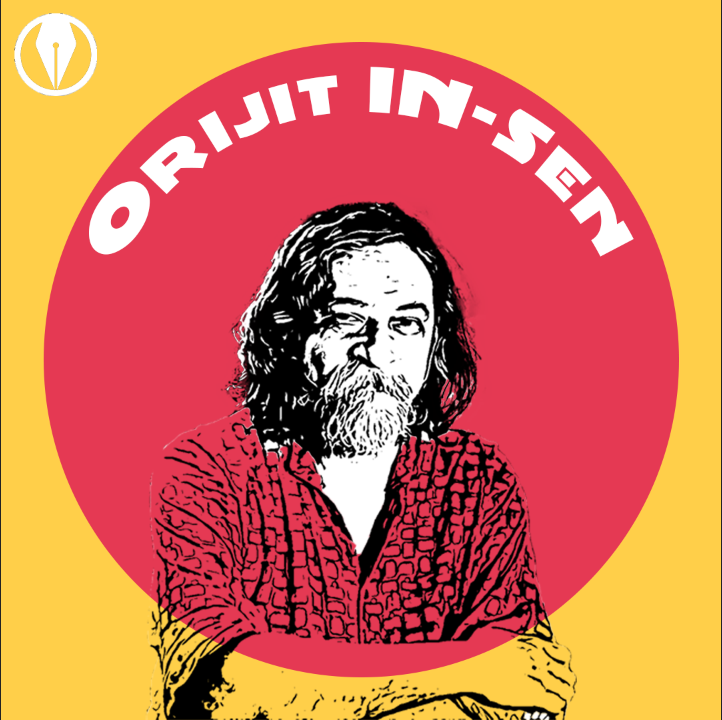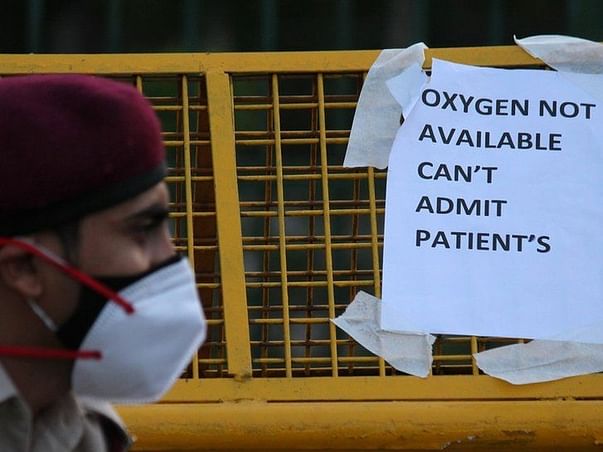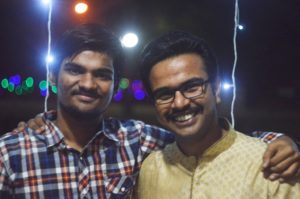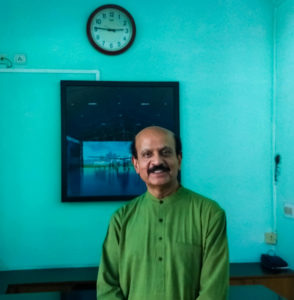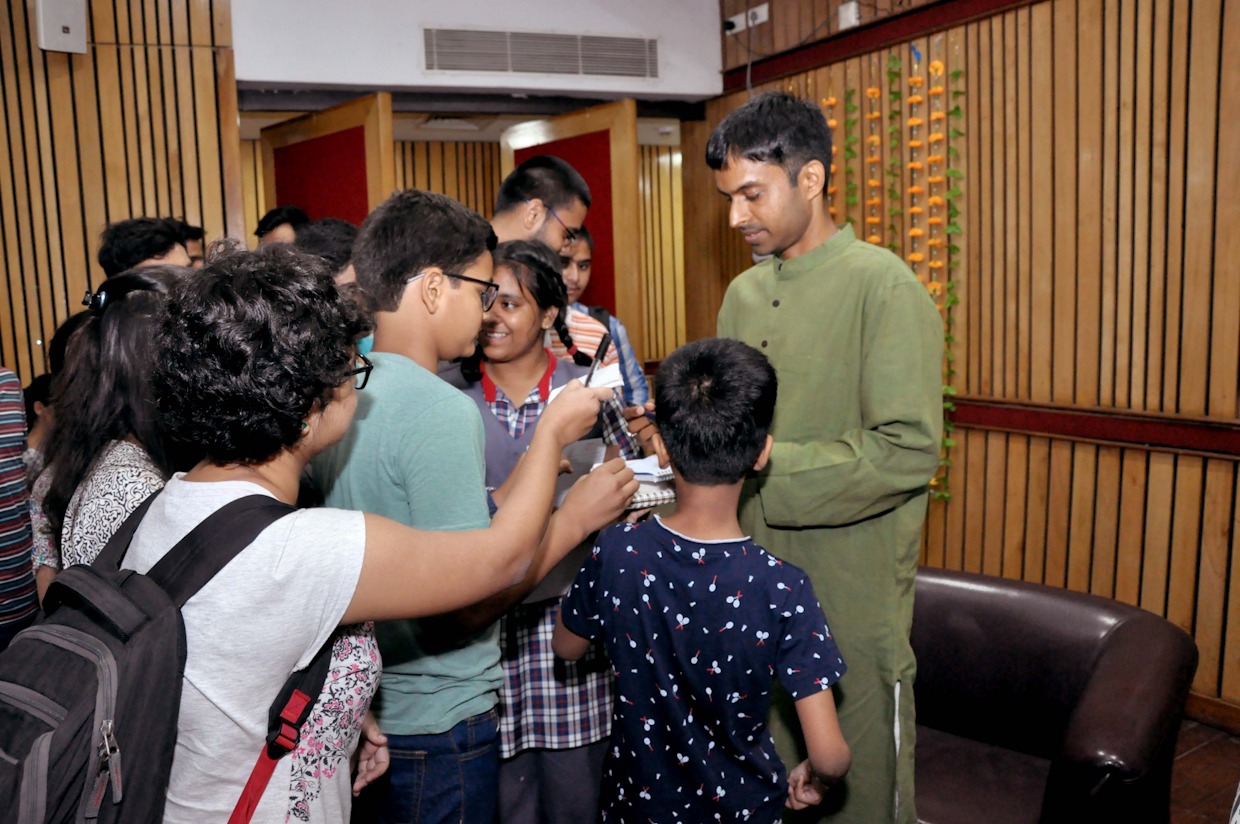 Photo credits: IIT K Media Center
Photo credits: IIT K Media Center
Usually, there are two classes of people- those who know how to do a great job and others, who can teach the next generation how to do a great job. Are these classes mutually exclusive? Well, Veteran badminton player Pullela Gopichand is a counter-example no one can refute.
Recently, IIT Kanpur was fortunate to witness the badminton legend, who not only had a glorious career as a player but also contributed to the sport, by coaching a generation of star players like Saina Nehwal, PV Sindhu, and Parupalli Kashyap. The 2001 All England Champion imparted some invaluable lessons as he delivered his masterclass-” Be The Change” on Friday. Dr. Gopichand, was here to receive his honorary doctorate, during the 2019 Convocation. His humble persona and insightful advice made the session a huge success.
Gopichand kicks off the session with a story of a young girl at his academy, who could not catch shuttles thrown at her during training. The girl then asked Gopichand,” Sir, Please teach me how to catch”. Her inability to perform the basic exercise forced him to look into several coaching books and manuals. But how do you teach someone how to catch a shuttle?–there was no definite answer. He said, “There are kids, who cannot run, dive, catch, hit and perform other basic exercises. Like the inability to count, write and perform basic calculations, the inability to perform the most basic sports activities like running and catching, is something which can be termed as Physical Illiteracy. In the past few years, there has been substantial growth in alphabetic and numerical literacy, but in our country, physical literacy still lags behind. I failed in mathematics as a kid, I could still manage a smooth life, but if someone fails in the most basic sports and games, there would be huge problems at every stage of his or her life”.
“I come from a typical Telugu family, and my parents wanted me to become a doctor/engineer like my elder brother, who was studying Engineering at IIT Madras. Not clearing the Engineering Entrance, helped me pursue badminton more seriously,” jokes the former All England Champion, who was asked by his parents to take one year off to try a career in Badminton. “There was a lot of pressure from my family, I had to play consistently well to convince them I was good enough”, he recalls. The session was followed by a short interaction, where he answered questions on his transition from a player to a coach, challenges that he faced while setting up his academy and the future of badminton in India.
1. How do we deal with failure, especially in sports? Let’s say we stumble on the court and everyone starts laughing. How does one cope up with all the mocking and still continue?
“Understanding is needed by everyone. But for a player, the journey is very personal. Let’s not look at referential excellence as a model, and start valuing personal excellence. You are running something today, you should ask yourself what you can do tomorrow? Some people start with an “opening balance”, some do not, hence the comparison is unfair. Also in the longer run, it matters whether or not you love what you are doing. It’s not about whether or not I ran 100 meters in 13 seconds or 10 seconds. If you really love running and have the passion to do that for life, it will drive you to excel, and numbers or performances won’t matter much then”.
2. Was there a time when you thought of giving up badminton? Also, If you were asked to choose a sport today, except badminton, which sport would you play?
“If I had cleared the Engineering Entrance, I would have been forced by my parents to give up badminton. Actually during my multiple surgeries, especially in 1992 and 1994, I could have easily left Badminton, it was the kid within that forced me to play more and not give up. Also in my case, since it was the only thing I was good at and enjoyed the most, I had to continue. For the second question, I would like to take up football, if I could stay away from injuries. Also, Athletics– I have always admired it as a sport”.
3. During the early stages of the Gopichand Academy, what were the challenges you had faced, in terms of logistics and finances, and how you eventually tackled them?
“As a kid, I had to run around for the most basic things in life, there was no pool, no shuttle –the court was not vacant a few times. I wanted all these facilities in my academy, to be available at all times. We got a piece of land in Hyderabad for the academy and started with the construction. As an all England champion, you’re meeting everyone, businessmen, entrepreneurs, etc. and everyone tells you that they would support your idea. I signed autographs, posed for pictures and attended all social functions, with a hope that people would help me out. I made presentations, attended meetings, and pitched my idea to everyone. But slowly people stopped taking my phone calls. 2 years of running around got me only Rs. 46 lacs. Sponsors claimed that nobody would watch badminton. I eventually had to mortgage my house, which I had bought after the All England and was sanctioned a 3cr loan. I then had to fight a 6-year court case, over a land dispute. But I made sure that the players were unaffected, there was not a single session when there were no shuttles or any other equipment. It was possible because I had support from family, it was just not me, it was the Gopichand Academy–my wife and parents, that stood behind me”.
4. You are one of the few players who have won both the Khel Ratna and the Dronacharya. How was the transition from a champion player to a champion coach?
“I think as a player you really focus on yourself. In a lot of ways, it is the same, when you’re a coach. You just have to reverse the mirror on the other side. You have to put yourself in the player’s shoes and think about what works best. As a player, I had gone ahead and learned by trial and error, as a coach I had to transfer that knowledge, as it would help the player grow faster.”
5. Badminton, unlike Cricket, has not emerged as a Pan-India Sport. There is a certain region that amounts to most of our international representation. How long would it take for badminton to grow in other regions as well?
“I think in the next 5 years we are going to get there. A huge number of people have started playing badminton in other regions– be it western, northern or eastern India. A lot of good academies have also emerged. The journey would be slow, but we can expect the next badminton stalwarts from other regions of India in 5-6 years.”
6. You have had a great career as a sportsperson, But are there any mistakes/ regrets that you would like to share?
“Honestly, I think If I was to start over again, I would love to do things exactly as I did, I won’t change much. Except for the irrational mistakes I did while I was playing on the court, I really feel that things could not have gone in a better way. I am completely satisfied with how all this went.”
Correspondence: Yash Kuwade, Aditya Trivedi
Interview and Edits: Pulkit Deshmukh






